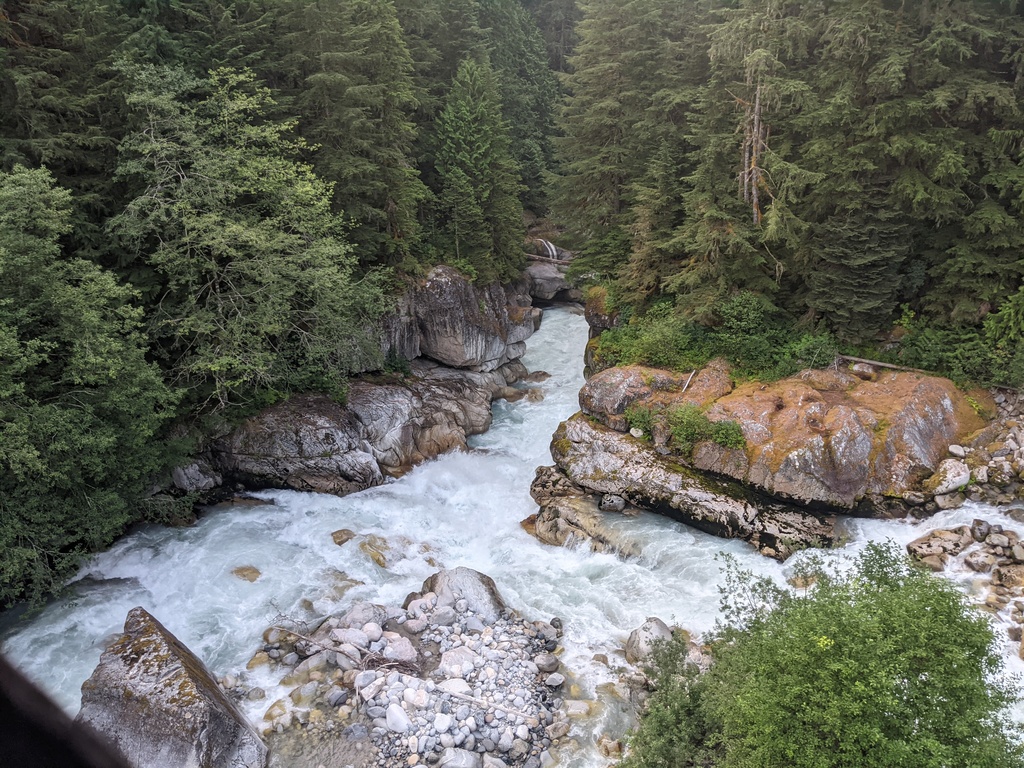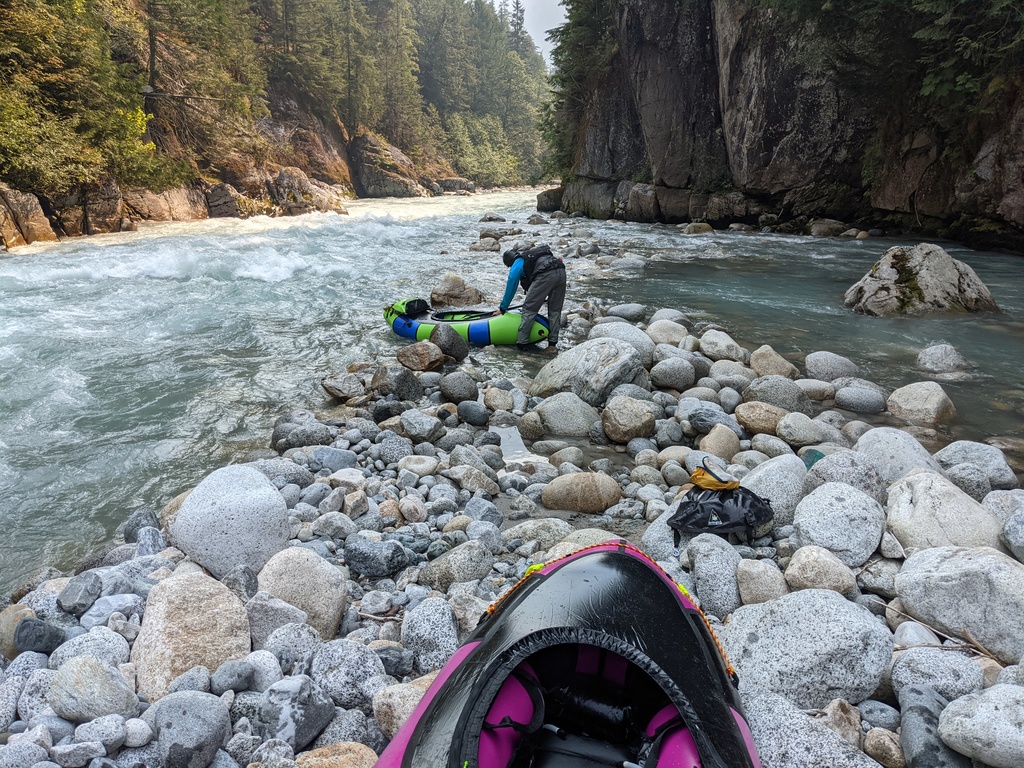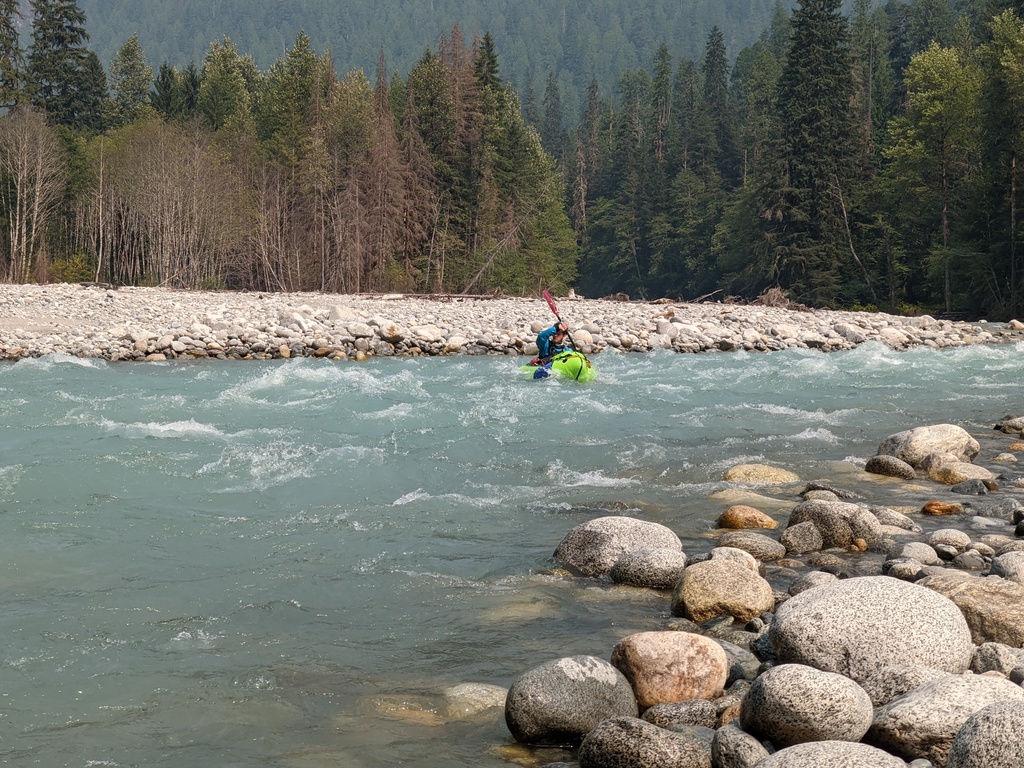While the Pitt River is only a stones throw from Vancouver and Squamish, it has the feel of a remote river much further away. Starting in Garibaldi Provincial Park, the Upper Pitt is a challenging hike-in wilderness river suitable for Class IV and stronger paddlers with a solid set of wilderness skills looking for a remote wilderness trip. The gauge on this trip is tough, but it's likely best in late summer and early fall.
Above the Canyon - Class IV+ (P)
The upper reaches of the Pitt have been reached by hiking from either the Diamond Head or Rubble Creek trailheads. Hiking from Diamond Head the goal is to use the valley below the Bishop Glacier to access the river with a few options for getting there. From Rubble Creek, access is via a paddle across Garibaldi Lake and hiking over the passes behind it into the Pitt River headwaters. Every route has it's pluses and minuses, but this trip hasn't been done enough to definitively recommend one route over others.
Above the Canyon - Class IV+ (P)
The upper reaches of the Pitt have been reached by hiking from either the Diamond Head or Rubble Creek trailheads. Hiking from Diamond Head the goal is to use the valley below the Bishop Glacier to access the river with a few options for getting there. From Rubble Creek, access is via a paddle across Garibaldi Lake and hiking over the passes behind it into the Pitt River headwaters. Every route has it's pluses and minuses, but this trip hasn't been done enough to definitively recommend one route over others.
Once on the river, be prepared for continuous, manky Class IV boating. The river is narrow and relatively shallow with a lot of rocks creating a seemingly endless stretch of drops, holes and marginal eddies. Portaging is usually possible at river level, and longer portages can be done by hiking up into mature forests and finding well worn game trails.
At around the 450m elevation band, the valley widens and the river eases to Class III/III+. But, the braiding brings significant log jams and increases the wood hazard, so keep your head up.

Eventually, the river starts to narrow again and pick up speed, marking the lead into a dangerous canyon. A strong team may be able to paddle this canyon, but for most people this will be a mandatory portage. Eddy out early to avoid a dangerous situation. Portaging can be done on either side of the river, but river left is preferable to avoid a challenging cliff band on river right.
Canyon to Hot Springs - Class III+ (IV)
Below the canyon the river becomes fun Class III+ leading into a continuous stretch of whitewater near IceWorm Creek. The biggest drop on this stretch is the final rapid, a III+/IV drop beside a house sized rock where a massive hole forms river center. Can be portaged either side and is best run river right of the hole.


Below this stretch the river eases into II+/III before entering another constriction near the southern boundary of Garibaldi Park. In the summer of 2021 this constriction was blocked by a major river wide log jam portaged at river level. There is nothing technical in this section, but the combination of weird boils and wood requires attentive paddling.
The river again eases below, widening into classic coastal Class II boogie water. Keep an eye out for wood through this section leading into the hot spring canyon.
The hot spring canyon doesn't have any rapids in it, but in summer 2021 was blocked by a river wide, river level logjam. Depending on the level this logjam could be fully submerged or a sweeper. Scout the canyon and/or portage if you're not confident you can make it through.
Hot Springs to Lake - Class II
Put in at the hot springs or just below the bridge downstream of the hot springs. A trail on river right gives easy access to the river here. Below the hot springs the river spreads out across a gravel floodplain. While this section is technically straightforwards, there is a ton of wood in part of the river. Be aware of your surroundings while you're paddling and choose your channels carefully.
On a nice day this stretch of river is very popular with jet boats and with few paddlers on this river, don't assume they'll be looking out for you. The Pitt River Fishing Lodge on is located river left just above the second bridge. They offer accommodation and one way water taxis across Pitt Lake. For paddlers looking for an easier trip, it may be possible to access this lower stretch via a water taxi and truck ride booked with the lodge or another local guide.
If you plan to camp near Pitt Lake be aware that the lake is tidal and the lower river banks and lake shore can disappear at high tide. It's possible to paddle out the lake, but be careful of strong afternoon headwinds and be ready for a long paddle. The nearest road access on this end is at Grant Narrows Park.